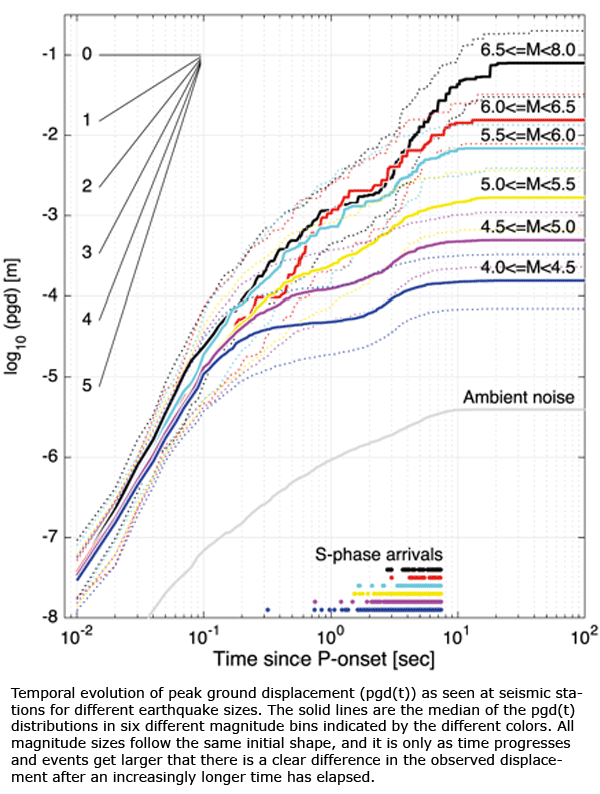2016-09-28
All earthquakes are created equal
As we all know, earthquakes cannot be predicted. However, earthquake early warning systems can be used to warn areas further away from the epicenter as soon as the seismic waves have been recorded and analyzed by the first monitoring stations. An earthquake rupture spreads along a fault at a speed of 2 to 3 kilometers per second. The rupture process of a magnitude 7 earthquake, which spreads across the surface of a fault that is around 50 km long, takes approximately 20 seconds to spread from one end of the fault to the other.
An interesting and as yet unanswered seismological question is: Does an earthquake that is just 1 or 2 seconds “old” already “know” how large it will be?
Read more...In a recently published publication, scientists at Caltech (California Institute of Technology) and the Swiss Seismological Service have investigated this question. In their search for an answer, they analyzed the seismic signals of more than 3,000 earthquakes close to the surface with a magnitude of 4 or higher, which were recorded at the seismic strong motion stations near the respective epicenter (at a maximum distance of 25km). The results show that large and small earthquakes develop identically at the start. The final size of an earthquake can only be estimated once the rupture is already very advanced. According to this study, predicting the final rupture length and magnitude of an earthquake at its beginning will thus remain impossible in the future. Earthquake early warning systems will therefore never be able to estimate the possible extent of damage at the beginning of an earthquake. Instead, they have to monitor the rupture process in real-time, to increase the warning level in case the earthquake grows further.
Link to the short version: Spotlight on research: “All Earthquakes Are Created Equal”
Link to the paper in Geophysical Research Letters: Men-Andrin Meier, Thomas Heaton and John Clinton: “Evidence for universal earthquake rupture initiation behavior”
